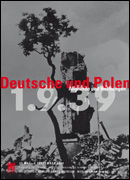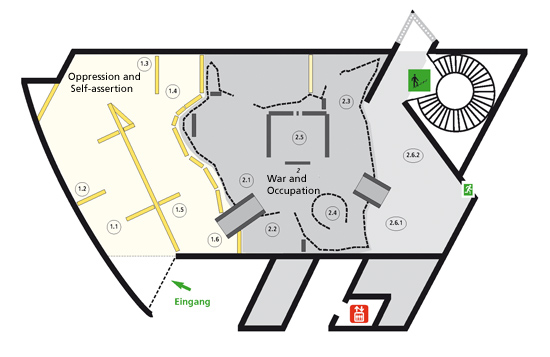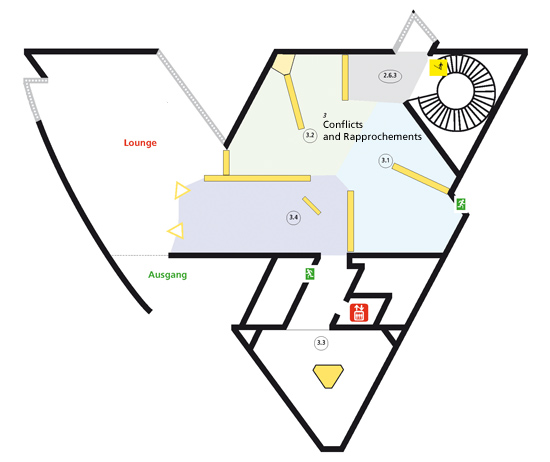


Exhibition | Oppression and Self-assertion | War and Occupation | Conflicts and Rapprochements
The exhibition on the occasion of the 70th anniversary of the German invasion of Poland shows the war and period of occupation as the all-time nadir in relations between Germans and Poles. Even before the war there had been only a few hopeful signs of reconciliation in the conflict-ridden relationship between the two countries. But the German invasion saw the beginning of a cruel war of extermination against the neighbouring country and its inhabitants. With the exhibition the German Historical Museum wants to recall the memory of the suffering caused by the war and throw light on the often thorny path to rapprochement between Germans and Poles after 1945.
Oppression and Self-assertion
The "land hunger" of Prussia, Austria and Russia had fatal consequences for Poland toward the end of the 18th century. In the course of the Polish clashes of interest, the neighbouring states had carved up the weakened country amongst themselves. After the third division in the year 1795, Poland was a nation without a state, and was to remain so for 123 years. During this period the history of Poland was marked by the struggle for freedom and national independence. After the reconstitution of Poland in 1918, the German government did not recognize Poland’s western borderline. Prejudices and conflicts characterized the relationship between Germans and Poles at this time.
War and Occupation
On 1 September 1939 Poland first fell victim to the German invasion, later to that of the Soviet Union. This sealed the division of the country; the Republic of Poland was crushed. From the very beginning German troops waged the war in Poland with brutal severity. Murders and massacres are shown in this part of the exhibition no less so than forced labour, the colonization of the occupied country, the genocide of the Jews as well as the resistance and self-assertion of the Poles against the occupying forces. This section of the exhibition ends with an account of the expulsion of the German population from areas east of the Oder and Neisse Rivers as well as that of the Polish population from the former eastern Polish regions as the war came to a close in 1945.
Conflicts and Rapprochements
The two German states approached their former enemy Poland in very different ways. In the Federal Republic the loss of the former German eastern regions was not accepted for a long time. The Treaty of Warsaw from 1970 recognizing the existing border along the Oder-Neisse line first created the basis for normal relations. The “friendship” to Poland propagated by the GDR remained largely a façade on the official level. Pioneers of reconciliation in the Federal Republic were often met with hostility; in the GDR and in Poland they had to reckon with constraints by the state.
Since 1989 new perspectives have evolved for German-Polish relations. Despite occasional irritations and conflicts of interest the contacts between Germans and Poles have never been more intensive and sustainable than today.


